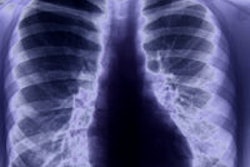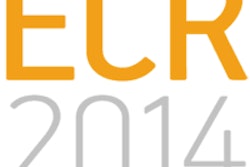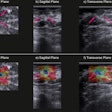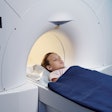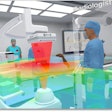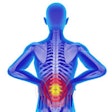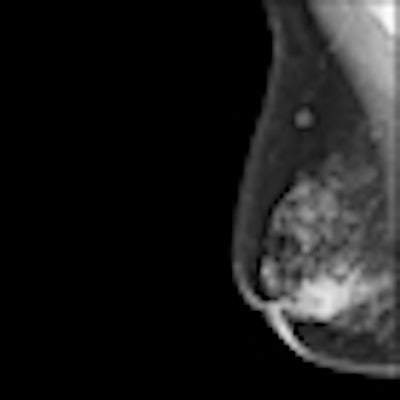
Many older women in the U.K. are coming into healthcare facilities with late-stage breast cancer primarily because they are unaware of the signs and symptoms of the disease. A pilot study shows that radiographers can help remedy the situation in a program that could have implications for breast care in Europe.
The program, Promoting Early Presentation (PEP), was developed to equip older women with breast cancer awareness -- in other words, the knowledge, confidence, motivation, and skills -- to present promptly to primary care facilities when they discover breast cancer symptoms, according to Dr. Caroline Burgess from the department of primary care and public health sciences at King's College London (Radiography, 7 July 2012, article in press).
The PEP intervention is a scripted 10-minute, one-on-one interaction with a radiographer and the patient, and is supported by a booklet, delivered after the woman has received her mammogram. The script covers the symptoms of breast cancer, the increased risk of developing breast cancer with increasing age, rehearsal of the skills required to check for breast changes, and what women should do if they discover a breast change.
Previous literature has reported on a randomized controlled trial of this intervention conducted with women attending for their final routine mammogram at ages 67 to 70 at the U.K. NHS Breast Screening Program. At one and two years of follow-up, the PEP intervention increased the proportion of women who were aware of breast cancer more than any other intervention of its kind. Diagnostic radiographers and assistant practitioners (both groups called "radiographers" in the current study) are in an excellent position to deliver this intervention, as they are the front-line NHS staff conducting breast screening.
Burgess and colleagues set out to determine the feasibility of training sufficient numbers of radiographers to offer the intervention effectively to all older women attending breast screening. At least four radiographers per breast screening service would be required, taking into account attrition and cover for leave.
In their single-center pilot study, Burgess and colleagues found seven of eight radiographers who were released to undertake the training achieved the required level of competency to deliver the intervention within four months. Competency was assessing during training according to quality criteria based on delivery of the key messages and delivery style.
All the radiographers improved over time in their confidence to ability to deliver the key messages of the PEP intervention. Confidence was assessed using a self-report measure before and after training. In addition, face-to-face qualitative interviews were conducted to hear the radiographers' perspective.
Provision of onsite coaching by trained and experienced radiographers was a novel approach to training that enabled tailoring to the individual needs of the radiographers, the researchers wrote. The one-to-one performance feedback ensured a speedier transfer of skills to the clinical setting than was achieved in an earlier study.
"Being trained and delivering the intervention in clinics was a broadly positive experience according to analysis of the individual interviews with the radiographers," Burgess wrote. "Radiographers reported enjoying having their role extended to include health promotion. They also felt that the benefits of the training had generalized to their routine clinical work and had improved their communication skills and confidence to respond to women of all ages attending breast screening."
The researchers also found some challenges to delivering training effectively, and there was scope for improving efficiency:
- It will be important to convey the level of commitment required to develop the skills to deliver the intervention.
- Selection procedures are needed to ensure only those with the time and motivation to undertake the training are recruited.
- Those who have arranged extended periods of annual leave or with competing work and training commitments are likely to struggle to complete training in a reasonable time frame.
"Evaluation of the training with larger numbers of staff might usefully assess whether different levels of staff achieve competency at varying rates in order to inform the content and length of training," the researchers added. "It was apparent that breast screening services require clearer guidelines to provide radiographers with sufficient clinic time for training and rehearsal of skills."
The researchers advise it's important to maintain the momentum of training by providing regular ongoing performance feedback in order for the radiographers to build and consolidate their skills and knowledge.
"Although our intervention is relatively brief compared with some psychological interventions, it is nonetheless complex comprising multiple components, rendering it liable to variable delivery between radiographers and even within the same radiographer," the researchers wrote. "Such variation in the clinical setting can jeopardize the effectiveness of an otherwise effective intervention."
Quality assurance methods include a manual, a training package, and ongoing performance feedback based on regular assessments of video-recorded interventions.
"Overall, the results of this small pilot study were very encouraging, suggesting enthusiasm from staff to be trained to promote early presentation of breast cancer in older women," Burgess and colleagues wrote. "The potential was demonstrated for flexibility within the system for training to be delivered in the busy setting of the NHS Breast Screening Program."
Some kinks still need to be worked out -- such as the amount of time required for radiographers to learn and rehearse the script -- but ways to streamline the package will be explored and tested so it can be "implemented with more efficiency and minimal disruption to the NHS in large research trials and clinical practice, they wrote.
If the intervention becomes incorporated into clinical practice, the training would most likely be submitted for accreditation by the College of Radiographers so it could go out to the entire workforce, thus placing radiographers in a position to promote early presentation of breast cancer among older women and potentially increase the likelihood of timely diagnosis and treatment of the disease, the researchers added.





